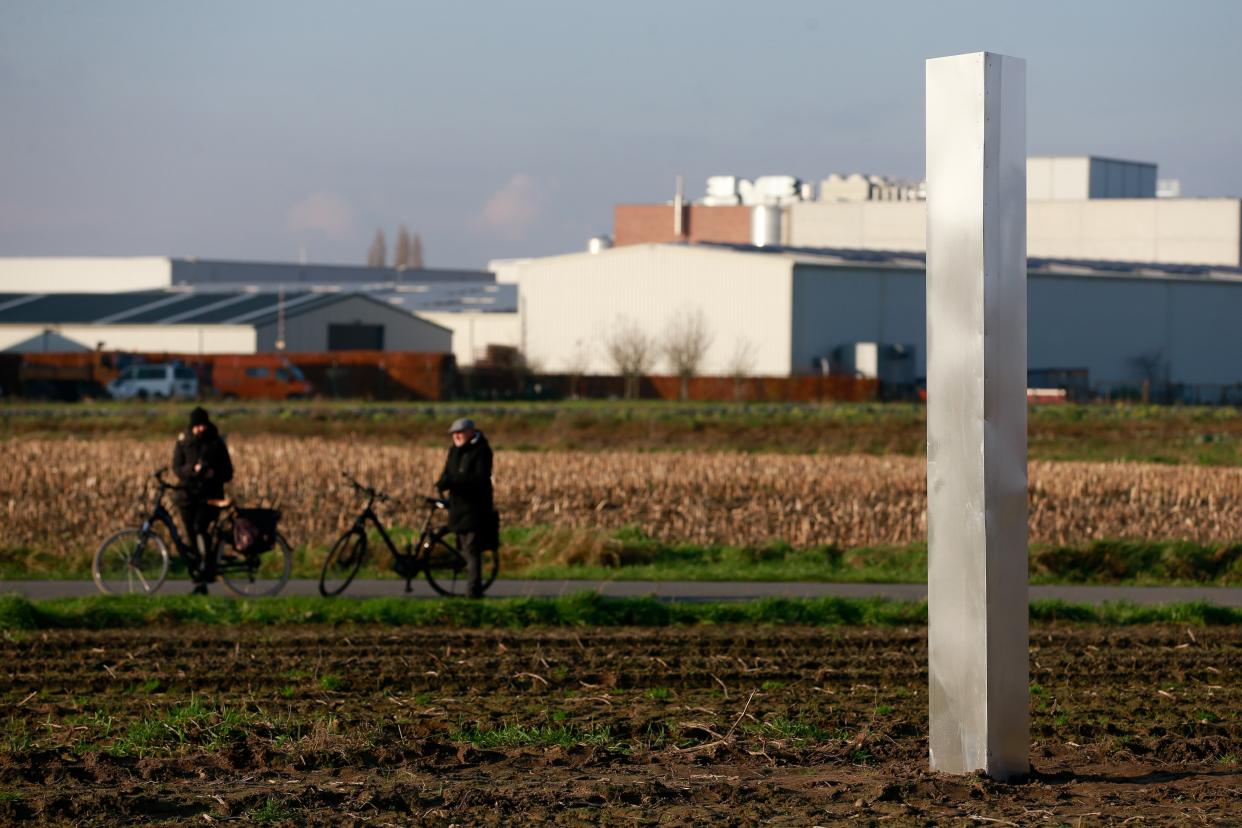More monoliths found in Belgium, Spain and Germany

A metal monolith in a field in Baasrode, Belgium
(EPA)Monoliths continue to spring up around the globe, with the most recent example of the world’s new craze spotted in a potato field in Belgium.
People became fascinated by these shiny structures after the first one was found in a remote part of the desert in Utah in mid-November, before being quickly removed.
Theories about its origin abounded online, with some suggesting it was the work of a new wave artist.
Since then, replicas have appeared on hilltops in California and Romania as well as at a beach on the Isle of Wight, sparking wide interest and speculation on social media.
Now, a metallic statue has been erected in a field in Baasrode, a town near the city of Dendermonde, Belgium, according to the Brussels Times.
Others have been recently reported at a church ruin in Ayllon, a village in Spain, and in the small German town of Sulzbach.
Although the quality of their design varies, they have all been compared to the alien monolith that is a recurring symbol in the 1968 film 2001: A Space Odyssey.
Speaking about the German monolith, Holger Klink, a resident of Sulzbach, told the broadcaster HR: “It’s not from outer space. The wooden structure on the inside is very Earthly.”
Watch: The mysterious metal monoliths appeared in U.S California, Utah and Romania
On Sunday, another obelisk appeared on Compton Beach on the Isle Wight, which has attracted so much attention that the National Trust had to send in rangers to prevent overcrowding.
Two days later, Tom Dunford, a 29-year-old designer from West Sussex, told the BBC that he had created the object purely for fun and installed it early on Sunday morning.
Mr Dunford told the broadcaster on Tuesday that he would leave the monolith there for a few more days to give more people the chance to photograph it.
Read More

